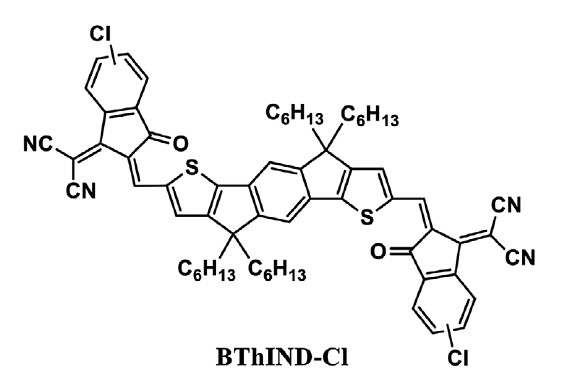ABSTRACT
Two non-fullerene small molecule acceptors (NFSMAs, BThIND-Cl and BThIND) with an A–D–A configuration containing indacenedithiophene donor core unit and terminal unit with IC (BThIND) and chlorinated IND were synthesized for their application as an acceptor in polymer solar cells (PSCs). Compared to BThIND, the chlorinated molecule BThIND-Cl exhibits lower energy levels and red-shifted absorption spectrum but also exhibits improved crystallinity and molecular packing. These two NFSMAs are used as acceptors along with a well-known conjugated polymer PM6, that exhibits complementary absorption to both NFSMAs, and has suitable frontier energy levels (highest occupied molecular orbital at –5.47 eV and lowest unoccupied molecular orbital at 3.61 eV) as a donor, in fabricating PSCs. Having optimized the active layers, the PSC based on PM6: BThIND-Cl showed higher power conversion efficiency (PCE) of 12.36% and a fill factor (FF) of 0.71 than that of PM6: BThIND counterpart (PCE = 8.04% with a FF of 0.66). Moreover, for the PM6: BThIND-Cl based PSC a quite high open-circuit voltage of 0.96 V was achieved in addition to a low energy loss of 0.53. Notably higher short circuit current and FF value were found for the BThIND-Cl based PSCs that are attributed to originate from the measured high values of charge carrier mobilities (and more balanced), to an advantageous nanoscalemorphology, and finally to increased efficiency of exciton dissociation as compared to BThIND counterparts. These results demonstrate that substitution of the single chlorine atom in the IC terminal unit of A–D–A NFSMA is sufficient to enhance the PCE of PSCs.


